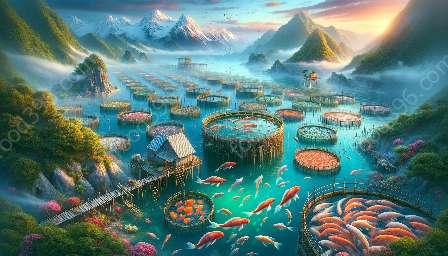As global demand for seafood continues to rise, sustainable practices in aquaculture are becoming increasingly important for the conservation of marine environments and the responsible production of seafood. In this comprehensive discussion, we will explore the various sustainable methods and techniques employed in aquaculture to ensure the long-term viability of seafood species.
Introduction to Aquaculture of Seafood Species
Aquaculture, also known as fish farming, involves the cultivation and harvest of aquatic organisms under controlled conditions. This industry plays a vital role in meeting the growing demand for seafood, providing an alternative to traditional fishing methods that can deplete natural fish populations and harm marine ecosystems. However, the rapid expansion of aquaculture has raised concerns about its environmental and social impacts, prompting the development of sustainable practices to mitigate these effects.
Conservation Methods in Aquaculture
Conservation is a key aspect of sustainable aquaculture, focusing on protecting and preserving the natural habitats and biodiversity of seafood species. To achieve this, aquaculture operations may utilize measures such as:
- Site Selection: Identifying and designating suitable locations for aquaculture facilities to minimize negative impacts on sensitive ecosystems and local biodiversity.
- Habitat Restoration: Implementing initiatives to restore and rehabilitate degraded or damaged aquatic habitats, promoting the recovery of native species and ecosystems.
- Breeding Programs: Supporting captive breeding and stock enhancement programs for endangered or depleted seafood species to help bolster their populations in the wild.
These conservation methods aim to ensure the sustainability of aquaculture practices while safeguarding the natural environment and its inhabitants.
Responsible Farming Techniques
Responsible farming techniques are essential for minimizing the environmental impact of aquaculture operations and promoting the welfare of seafood species. Some of the key practices include:
- Effluent Management: Implementing systems to monitor and control the discharge of waste and byproducts from aquaculture facilities, preventing water pollution and environmental degradation.
- Feed Sustainability: Using sustainable and nutritious feed sources, such as plant-based alternatives, to reduce the reliance on wild-caught fish for feed and minimize pressure on marine ecosystems.
- Stocking Density: Managing the population density of seafood species within aquaculture systems to avoid overcrowding, minimize stress, and prevent disease outbreaks.
By adopting responsible farming techniques, aquaculture producers can enhance the overall sustainability and efficiency of their operations.
Innovative Solutions for Sustainable Aquaculture
The ongoing development of innovative solutions is driving advancements in sustainable aquaculture, offering new methods and technologies to address environmental challenges and improve industry practices. These solutions encompass a range of strategies, including:
- Recirculating Aquaculture Systems (RAS): Utilizing closed-loop systems to efficiently recirculate and treat water within aquaculture facilities, reducing water usage, minimizing environmental impact, and enhancing biosecurity.
- Integrated Multi-Trophic Aquaculture (IMTA): Incorporating multiple species into aquaculture systems to create symbiotic relationships that optimize resource utilization, improve waste management, and enhance ecological balance.
- Alternative Protein Sources: Exploring alternative protein ingredients, such as insect meal or microbial-derived proteins, as sustainable feed options to reduce the reliance on fishmeal and fish oil.
These innovative solutions are shaping the future of sustainable aquaculture by fostering greater efficiency, minimizing resource use, and reducing environmental footprint.
Seafood Science and Environmental Impact
Seafood science plays a crucial role in understanding the environmental impact of aquaculture and promoting sustainable practices in the industry. By conducting research and data analysis, seafood scientists can assess various factors, including:
- Ecological Footprint: Evaluating the ecological footprint of aquaculture operations, considering factors such as energy consumption, water usage, and greenhouse gas emissions.
- Life Cycle Assessment (LCA): Applying LCA methodologies to quantify and compare the environmental impacts of different aquaculture systems and seafood production methods.
- Ecosystem Health: Monitoring and assessing the ecological health and resilience of marine ecosystems impacted by aquaculture activities, identifying potential risks and opportunities for improvement.
By integrating seafood science insights, the aquaculture industry can make informed decisions and implement evidence-based strategies to enhance sustainability and environmental responsibility.
Conclusion
Sustainable practices in aquaculture are critical for ensuring the long-term health and viability of seafood species, as well as the preservation of marine ecosystems. Through conservation methods, responsible farming techniques, and innovative solutions, the aquaculture industry can strive towards greater sustainability and environmental stewardship. By embracing the principles of seafood science and collaborating on research and development, stakeholders can collectively work towards a future where aquaculture meets the demand for seafood in a responsible, ethical, and sustainable manner.

